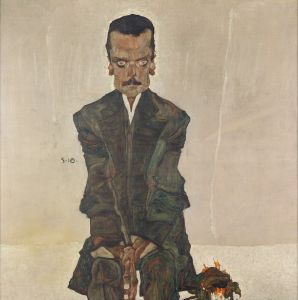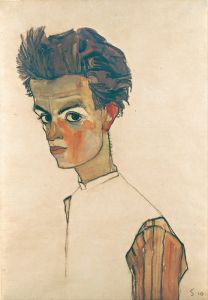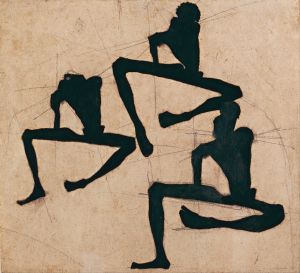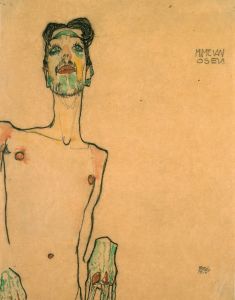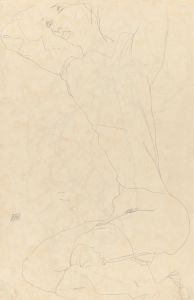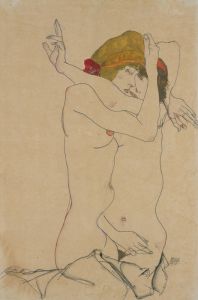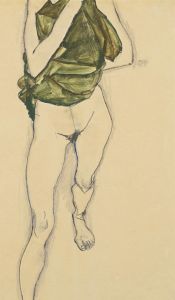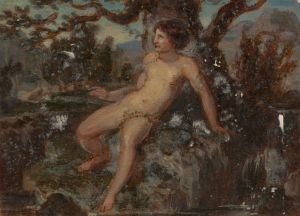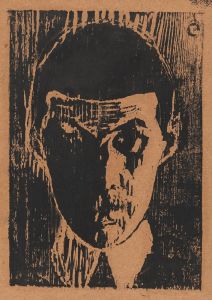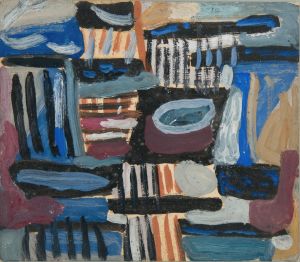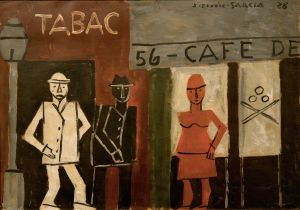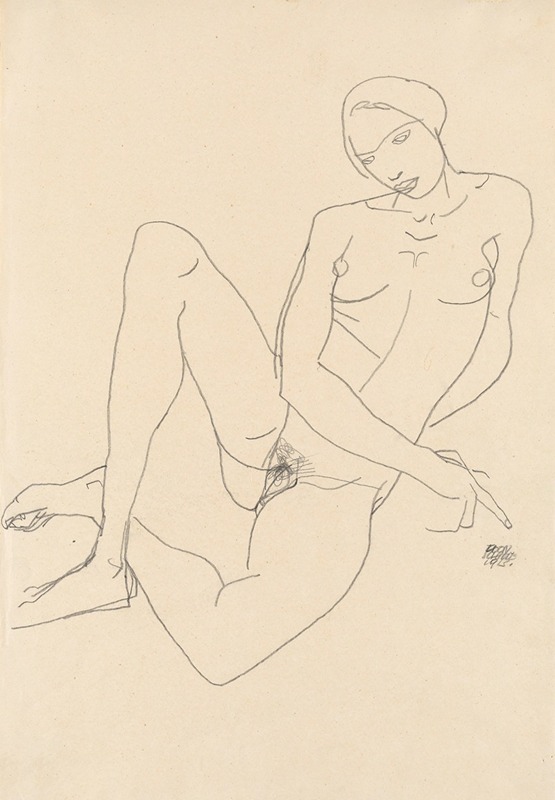
Sitzender Weiblicher Akt, mit gegrätschten Beinen
A hand-painted replica of Egon Schiele’s masterpiece Sitzender Weiblicher Akt, mit gegrätschten Beinen, meticulously crafted by professional artists to capture the true essence of the original. Each piece is created with museum-quality canvas and rare mineral pigments, carefully painted by experienced artists with delicate brushstrokes and rich, layered colors to perfectly recreate the texture of the original artwork. Unlike machine-printed reproductions, this hand-painted version brings the painting to life, infused with the artist’s emotions and skill in every stroke. Whether for personal collection or home decoration, it instantly elevates the artistic atmosphere of any space.
Egon Schiele (1890–1918) was an Austrian painter known for his distinctive style and significant contribution to early 20th-century art. He was a protégé of Gustav Klimt and a major figure of Austrian Expressionism. Schiele's work is characterized by its intensity, raw sexuality, and the exploration of the human form, often depicted in contorted poses and with an emphasis on psychological depth.
"Sitzender Weiblicher Akt, mit gegrätschten Beinen" (Seated Female Nude with Spread Legs) is one of Schiele's works that exemplifies his approach to the human figure. Created in 1914, this painting is a striking example of Schiele's exploration of the human body and his interest in capturing the complexities of human emotion and sexuality. The painting features a female nude seated with her legs spread, a pose that was considered provocative and daring for its time.
Schiele's use of line and color in this work is notable. He employs sharp, angular lines to define the contours of the body, a technique that adds a sense of tension and dynamism to the figure. The use of color is both bold and subtle, with a limited palette that emphasizes the flesh tones of the model against a more subdued background. This contrast serves to draw the viewer's attention to the figure itself, highlighting the vulnerability and strength inherent in the pose.
The model's expression and posture convey a complex mix of emotions, a hallmark of Schiele's work. There is a sense of introspection and defiance, as the subject meets the viewer's gaze directly. This direct engagement challenges traditional representations of the female nude, which often depicted women as passive objects of beauty. Instead, Schiele's portrayal is one of agency and individuality, reflecting broader themes of identity and self-awareness.
Schiele's work, including "Sitzender Weiblicher Akt, mit gegrätschten Beinen," was often met with controversy due to its explicit content and perceived indecency. During his lifetime, Schiele faced legal challenges and societal backlash, yet he remained committed to his artistic vision. His willingness to confront taboo subjects and push the boundaries of acceptable art contributed to his lasting legacy.
The painting is also reflective of the broader cultural and artistic movements of the time. The early 20th century was a period of significant change and upheaval, with artists seeking new ways to express the complexities of modern life. Schiele's work, with its focus on the human psyche and the exploration of existential themes, aligns with the Expressionist movement's goals of conveying emotional experience rather than physical reality.
Today, Egon Schiele is celebrated as one of the most important figures in modern art, and his works are held in high regard by collectors and institutions worldwide. "Sitzender Weiblicher Akt, mit gegrätschten Beinen" remains a powerful example of his artistic achievements, illustrating his unique ability to capture the essence of the human condition through his innovative approach to form and composition.







